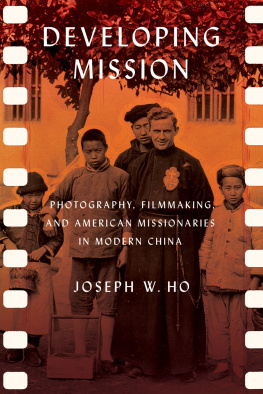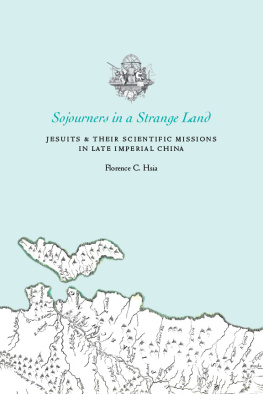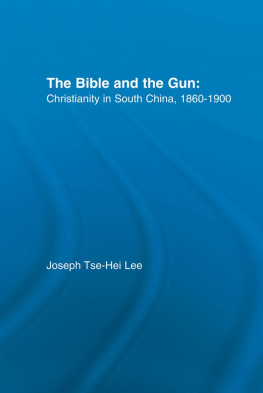Joseph W. Ho - Developing Mission: Photography, Filmmaking, and American Missionaries in Modern China
Here you can read online Joseph W. Ho - Developing Mission: Photography, Filmmaking, and American Missionaries in Modern China full text of the book (entire story) in english for free. Download pdf and epub, get meaning, cover and reviews about this ebook. City: Ithaca, year: 2022, publisher: Cornell University Press, genre: Art. Description of the work, (preface) as well as reviews are available. Best literature library LitArk.com created for fans of good reading and offers a wide selection of genres:
Romance novel
Science fiction
Adventure
Detective
Science
History
Home and family
Prose
Art
Politics
Computer
Non-fiction
Religion
Business
Children
Humor
Choose a favorite category and find really read worthwhile books. Enjoy immersion in the world of imagination, feel the emotions of the characters or learn something new for yourself, make an fascinating discovery.
- Book:Developing Mission: Photography, Filmmaking, and American Missionaries in Modern China
- Author:
- Publisher:Cornell University Press
- Genre:
- Year:2022
- City:Ithaca
- Rating:4 / 5
- Favourites:Add to favourites
- Your mark:
Developing Mission: Photography, Filmmaking, and American Missionaries in Modern China: summary, description and annotation
We offer to read an annotation, description, summary or preface (depends on what the author of the book "Developing Mission: Photography, Filmmaking, and American Missionaries in Modern China" wrote himself). If you haven't found the necessary information about the book — write in the comments, we will try to find it.
InDeveloping Mission, Joseph W. Ho offers a transnational cultural history of US and Chinese communities framed by missionary lenses through time and spacetracing the lives and afterlives of images, cameras, and visual imaginations from before the Second Sino-Japanese War through the first years of the Peoples Republic of China.
When American Protestant and Catholic missionaries entered interwar China, they did so with cameras in hand. Missions principally aimed at the conversion of souls and the modernization of East Asia, became, by virtue of the still and moving images recorded, quasi-anthropological ventures that shaped popular understandings of and formal foreign policy toward China. Portable photographic technologies changed the very nature of missionary experience, while images that missionaries circulated between China and the United States affected cross-cultural encounters in times of peace and war.
Ho illuminates the centrality of visual practices in the American missionary enterprise in modern China, even as intersecting modernities and changing Sino-US relations radically transformed lives behind and in front of those lenses. In doing so, Developing Mission reconstructs the almost-lost histories of transnational image makers, subjects, and viewers across twentieth-century China and the United States.
Joseph W. Ho: author's other books
Who wrote Developing Mission: Photography, Filmmaking, and American Missionaries in Modern China? Find out the surname, the name of the author of the book and a list of all author's works by series.





